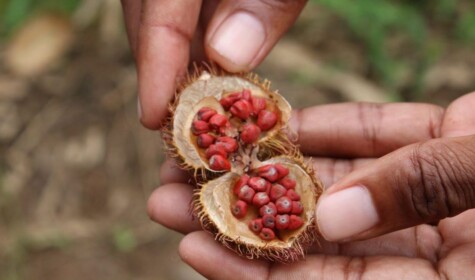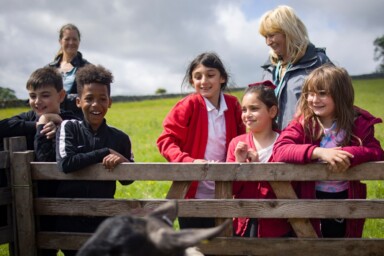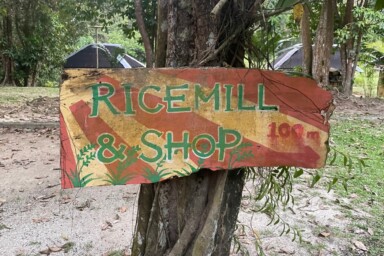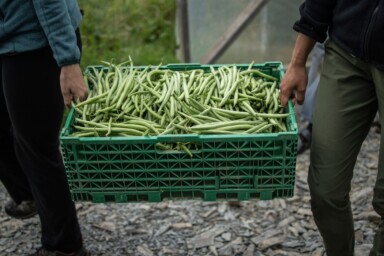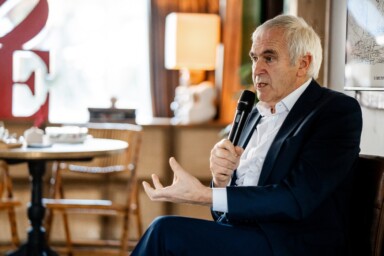These recent films all about food and farming issues are definitely worth a watch. Read our short reviews to help you choose.
Seed: The untold story
Seed: The untold story tells a beautiful tale of seed diversity and its sad demise. From 544 varieties of cabbage, we have just 28; from 158 varieties of cauliflower, we now have 9, and the list goes on and on and on. “We have lost 94% of vegetable seed varieties in the 20th century,” we are told at the start of the film. It is truly, enough to make you weep. Just as the diversity of animal species is undergoing a mass extinction, so are our seeds.
The stunning images of seeds which opens the film, makes a vivid visual point about the magnificent diversity. But so many of these seeds are only found in a handful of critical ‘seed banks’ dotted across the world – the largest of which is on Svalbard in the Artic Ocean. “Genetic diversity is the hedge between us and global agriculture,” says Will Bonsall of Scatterseed Projectand at the moment we are destroying the chances of our continued survival on this planet.
The story of seed’s demise is integrally linked to the rise of industrial agriculture in the 20th century and the commercialisation of this most vital part of agricultural production. Early American industrialists didn’t want seed to be free, but they could only stop this by breeding seed that didn’t generate seed in its next generation – what are now known as F1 hybrids. Some 90% of the seeds we currently use to grow our food is owned by big bio-tech and chemical companies like Monsanto, Syngenta and others.
The film’s examination of how seeds first became patented aptly illustrates government’s increasing imbrication with corporate capitalism. That companies were ever allowed to own a life form is a profound perversion of the democracy the founding fathers of America held so dear. With seeds the foundation of the world’s agriculture, their declining diversity is a critical issue. Our saviours might be the handful of seed crusaders, carefully cultivating and saving the seeds of our lesser known varietals around the world. Saving seeds may just be one of the most important things we do in this century.
Sustainable
Telling the tale of one small farm in the mid-west of America, Sustainable makes a cogent and important case for a different food system from the one that we currently have – one that is “green and nutritious and fair and affordable” in the words of the food critic Mark Bittman, one of the many people interviewed in the film.
Spence Farm, run by Marty Travis, is a family farm in the old school sense, passed down through family members for 150 years. Surrounded by conventional farmers locked into corn and soy production, Travis does things differently, selling direct to restaurants in Chicago through a cooperative that he organised. He is the epitome of a new kind of farmer in America – one that is asking the question ‘What is true sustainability?’
In Sustainable, the unsustainability of industrial farming is made explicit and unmistakable through Travis and others who argue that it’s depleting our natural resources – soil, ground water, biodiversity – and damaging our environment while not feeding us properly. The film challenges the orthodoxy that industrial farming will improve agricultural efficiency and feed the world, and shows that this orthodoxy simply does not work. The food produced through this system, has not improved food security and, as the obesity epidemic shows, it’s making people sick. In the words of Eli Rogosa of the Heritage Grain Conservancy, “We’ve been sold a crock, and we don’t have to buy into a globalised, industrialised food system.”
Starting with soil, the most fundamental element of agriculture, the film looks at what we’ve been doing in agriculture, asking who benefits from it and what we can do to make it better? It covers a broad range of problems in the industrialised system, from soil degradation and erosion to declining biodiversity, pesticide run-off and animal welfare. Biology and biodiversity are the solution, inviting us to care again for the soil and everything else that lives. Returning to Bittman, “The way that we produce our food and the way that we eat, affects everything.”
Home Flavored
This potent little film built around the words of the young poet, Monica Mendoza, was a winner of the 2016 Real Food Films. It’s a vivid reflection on the role that Coke and other ‘ultra-processed’ food has played in her family life, cultural identity and health – perfectly capturing the insidiousness of how it becomes embedded in social interactions, family dynamics and the physical body. The four minute film is a raging rant against the reflex of ‘junk’ food, rolled out when friends visit, made the centrepiece of a family ‘fiesta’ and a constant dinner table necessity. It destroys health from the inside out. “It just isn’t polite not to have soda when visitors are over,” she tells us; and “Accept everything that is offered to you.” “Diabetes and obesity is the last thing on our minds.”
Mendoza is the first generation daughter of Mexican immigrants who have come to the US. The Coke, crisps and other treats sit alongside of home-cooked meals of sopas and enchiladas. When you can buy four 2 litre bottles of Coke for a dollar, it’s time to stock up. With her parents working long hours to make a place for themselves and their family in their new American world, there is little time to ration or monitor what the children are eating, especially while “…desperately searching for home in our plates and cups.” Coke is comfort and familiarity, an infusion of artificial “nostalgia” adopted as real. It’s been a staple in Mexico as much as in the US for long decades. But, she exhorts, “We are literally killing ourselves trying to find parts of us in Coke bottles.”
At The Fork
At The Fork tackles the issue of animal welfare in US agriculture and addresses the ethical questions raised by eating meat. Created and narrated by John Papola, a meat eater who was encouraged by his wife, a vegetarian, to explore the reality of what goes into making the food he eats.
The film takes a look at different production systems for meat, giving consumers an insight into what goes on in each. But it doesn’t provide the whole picture, and in focusing solely on animal welfare, it can be simplistic in its conclusions. Overlooking environmental issues, and failing to explore the costs and benefits of meat alternatives, it ends by calling for a reduction in meat consumption. The truth is, however, that in shifting our diets away from meat we have seen an increase in vegetable oils and other crops that can be just as damaging in their production. Palm oil, for example, has largely been grown on deforested land in South East Asia, and given this is responsible for the declining population of the last Great Apes, it is certainly not a ‘bloodless’ product.
Perhaps the strongest element of this film is that it lets the farmers speak. We begin to understand how we ended up with industrialised factory systems, through a process of refinement and increasing efficiency. The clear message is that cost plays a huge role in how farms are run.
Industrial livestock farmers have been driven by the need to maximise production in order to cover their costs. Some farmers of these systems would like to make changes and become less intensive, but find they cannot afford to. The demand for cheap food means that sustainably produced meat, milk and eggs cannot compete economically with industrially produced food. As one farmer of 80,000 pigs in Indiana says, “I will happily find a way to raise pigs however the consumer wants to have them, as long as the consumer’s going to pay me.”
This film is all about consumer impact. As one farmer says, “The consumer must vote with his dollar and make high welfare farms more than a novelty for the intelligentsia.” We need informed consumer pressure for this to happen, and At The Fork provides a good starting point for those who have never thought about where their meat comes from, as well as for those who care about welfare but want to know more about different production systems.
Bugs
We’ve all heard about the benefits of eating insects for the planet, but what about for our palates? In Bugs, researchers Ben Reade and Josh Evans of the Nordic Food Lab travel across Europe, Mexico, Australia, Kenya and further afield in search of the most unique and delicious insects.
For many Westerners, this concept is often met with disgust but many cultures around the world embrace the eating of insects. After viewing Ben and Josh, consuming a whole host of bugs, from cheese fly larvae to locusts and termites with (almost) no hesitation, you will certainly lose any previous squeamishness!
As the film progresses the issue of sustainability – or the idea that insects are the solution to our problems of global food security – becomes impossible to ignore. In 2013, the United Nations proposed that eating more insects could help to boost nutrition and reduce pollution amid concerns around greenhouse gas emissions, but is this concept really as straight forward as it first appears? Ben and Josh aren’t convinced, asserting that “sustainability emerges out of a diverse system”.
It quickly becomes apparent that the rush towards quick fixes leaves us open to the same problems that we are already facing – including labour abuses, access to culturally appropriate food and the corporate takeover of our food supply. As many food companies see insects purely as a business opportunity, we risk introducing a sustainable insect into an unsustainable food system.
Bugs will leave you questioning the other so called ‘silver bullets’ to the problems that we face and suggests that we need a more holistic approach when thinking about our future food systems.
Photograph: Travel Aficionado
